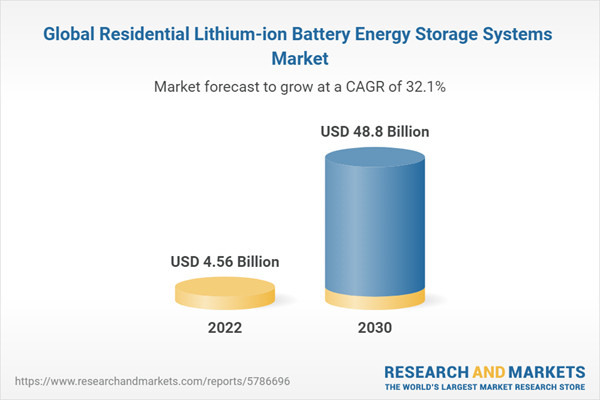The U.S. is one of the largest regional segments globally in terms of the adoption of battery energy storage systems owing to the rising demand for renewable energy in the country. The market in the country is projected to grow at a significant CAGR over the forecast period. Factors such positive government initiatives and increasing efficiency of residential battery energy storage analysis is expected to increase the market for residential lithium ion battery storage systems over the forecast period.
For instance, the Inflation Reduction Act of 2022 introduced a tax credit for the installation of solar PV panels as well as battery energy storage systems for residential and commercial industries. The government planned to provide a tax credit worth 30% of the installation cost of the battery energy storage system. This is expected to incentivize homeowners to install battery storage systems along with solar PV installation driving demand in the market.
3 kW to 5 kW dominated the global residential lithium-ion battery energy storage systems industry in the power rating segment and accounted for more than 54.0% overall revenue share in 2022. Residential lithium-ion battery energy storage systems with a capacity of between 3 kW to 5 kW, can store enough energy to power a household for several hours, even at peak hours of energy demand. This can help to reduce energy bills and provide greater control over energy consumption. Another advantage of these battery storage systems is their scalability. They can be easily installed in a variety of residential settings, from residential buildings for multiple apartments to larger homes, and can be scaled up or down depending on the energy needs of the household. Battery energy storage systems with a capacity between 3kW to 5kW are generally more expensive owing to their higher capacity leading to higher production and installation costs.
The off-grid segment dominated the global market in the connectivity segment and accounted for more than 56.0% overall revenue share in 2022. The demand for residential lithium-ion battery energy storage systems for on-grid applications is on the rise as it provides homeowners with reliable access to energy even in remote places. These systems are designed to store excess energy generated by solar panels or wind turbines, which can then be used to power homes during periods of low energy production or when energy generation is offline.
One of the key benefits of these systems is their ability to provide greater energy independence and security for homeowners living in remote areas. By storing excess energy from solar panels or wind turbines, homeowners can ensure that they have a reliable source of energy at all times.
Asia Pacific dominated the regional segment and accounted for the overall revenue share of more than 40.0% in 2022. The residential lithium-ion battery energy storage system industry in the Asia Pacific is expected to witness significant growth over the forecast period. This can be attributed to the increasing demand for clean energy and the increasing adoption of solar power systems in the residential sector.
Residential Lithium-ion Battery Energy Storage Systems Market Report Highlights
- The 3 kW to 5 kW power rating segment occupied the largest revenue share on account of its large capacity to store sufficient energy to power a household for several hours, even during times of high energy demand. This helps reduce energy bills and provides greater control over energy consumption
- The off-grid connectivity segment occupied the largest revenue share on account of rising utilization in rural and remote areas because it provides homeowners with reliable access to energy
- The off-grid connectivity segment accounted for more than 56.0% of revenue share in 2022 and is projected to grow at the CAGR of 31.6% over the forecast period
- Asia Pacific dominated the regional segment and accounted for the overall revenue share of more than 40.0% in 2022
Table of Contents
Companies Mentioned
- HAIKAI
- Enphase Energy
- E3/DC
- Panasonic
- sonnen Holding GmbH
- Tesla
- Pylon Technologies Co., Ltd.
- LG Chem
- AlphaESS
- Generac Power Systems
- Hitachi Energy
- GOODWE
Methodology

LOADING...
Table Information
| Report Attribute | Details |
|---|---|
| No. of Pages | 110 |
| Published | April 2023 |
| Forecast Period | 2022 - 2030 |
| Estimated Market Value ( USD | $ 4.56 Billion |
| Forecasted Market Value ( USD | $ 48.8 Billion |
| Compound Annual Growth Rate | 32.1% |
| Regions Covered | Global |
| No. of Companies Mentioned | 12 |









